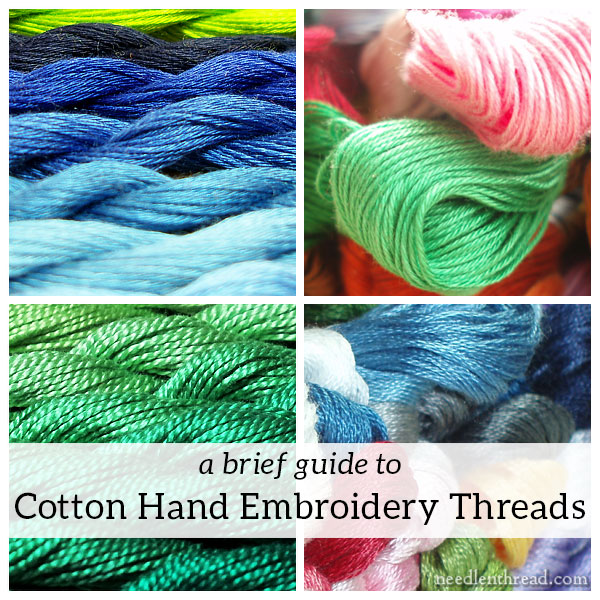Embarking on your embroidery journey and feeling overwhelmed by the myriad of thread options? I’ve been there too! Knowing which threads your machine prefers, understanding the different types, and distinguishing between good and bad quality are crucial for a successful embroidery project.
Spotting High-Quality Embroidery Thread
Don’t be tricked by every thread that claims to be top-notch. A smooth and uniform texture without any visible irregularities is a sign of quality. When you rub the thread between your fingers, it should glide seamlessly. Test the thread’s strength by gently pulling; if it snaps easily, it’s a no-go. Remember, our machines can be pretty brutal with thread!
Understanding Embroidery Thread Weight
Thread weight (wt) indicates its thickness. Surprisingly, a higher weight number means a thinner thread! For example, 60 wt is finer than 40 wt. Lighter threads are perfect for delicate fabrics, whereas dense fabrics prefer thicker threads. Standard machine embroidery designs are usually crafted for 40 wt thread. Do note, however, that altering thread weight might necessitate a needle change. Always check your machine’s manual to ensure compatibility with different thread weights.
Exploring Embroidery Machine Threads
Let’s dive into the main top thread types and then venture into specialized ones:
- Rayon Machine Embroidery Thread – Loved for its bright sheen, rayon is a classic choice. However, its susceptibility to color bleeding and fading has lessened its appeal over time.
- Polyester Machine Embroidery Thread – Gaining traction for its durability and vibrant colors, polyester is a stellar alternative to rayon. It’s resistant to fading and bleaching, making it a top pick for many, including me!
- Cotton Embroidery Machine Thread – A natural choice, cotton threads offer a matte finish. They’re more brittle, though, and can shrink post-washing.
- Silk Embroidery Thread – Luxurious and robust, silk threads are ideal for delicate fabrics.
- Metallic Embroidery Thread – These threads shine but can be tricky to work with due to their fragile nature.
- Glow-In-The-Dark Machine Embroidery Thread – A fun addition for unique projects, but requires some expertise.
- Variegated Embroidery Threads – Multi-colored threads that are simpler to use than some specialty threads.
- UV Color-Changing Thread – These threads switch colors when exposed to UV light, adding a magical touch to embroidery projects.
Bobbin Thread Insights
For embroidery, the bobbin thread is usually finer than the top thread. I personally prefer a 100% polyester 60 wt thread for my bobbins. It’s always wise to check your machine’s manual for specific requirements. A tip? Use white bobbin thread when the back of your design is hidden—it saves you from switching colors frequently!
Building Your Thread Collection
Unlike regular sewing, embroidery thrives on color variety. While a beginner might start with a basic 30-pack, the sky’s the limit when it comes to expanding your thread collection. I currently have a treasure trove of 400 colors!
Thread Brands and Recommendations
Brand loyalty is subjective in the embroidery world. While some may swear by Madeira or Sulky, others might prefer Brothread or Isacord. The key is to experiment and find what works best with your machine and your projects.
Embroidery Thread Usage Tips
- Always cut the thread at the needle entry point and pull downwards. This protects your machine’s tension discs.
- Experiencing issues? A simple needle change can solve many problems.
- Different threads have specific winding patterns (cross-wound or stacked), influencing how they should be placed on your machine.
- For organizing and accessing threads, consider investing in a thread stand. It’s a game-changer!
| Details | Information |
|---|---|
| Quality Indicators | Smooth, uniform, strong tensile strength |
| Thread Weight | Higher number = Thinner thread |
| Popular Threads | Rayon, Polyester, Cotton |
| Bobbin Thread Preference | 100% polyester 60 wt |
| Starting Collection | 30-pack of 40 wt polyester thread |
| Thread Change Tip | Cut at needle and pull downwards |
Embroidery, like all arts, requires patience, practice, and experimentation. The beauty of this craft is its capacity to evolve and adapt. As you progress, you’ll discover the threads, techniques, and tools that resonate most with you. Here’s wishing you a vibrant and seamless embroidery journey!

